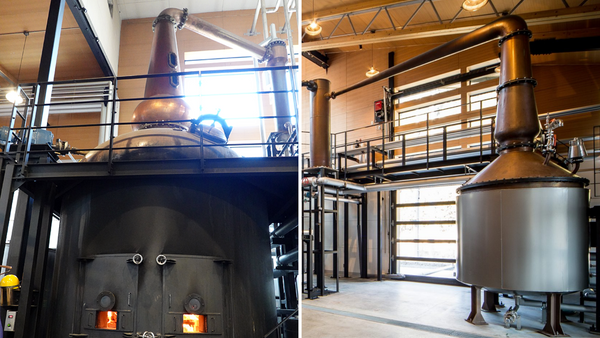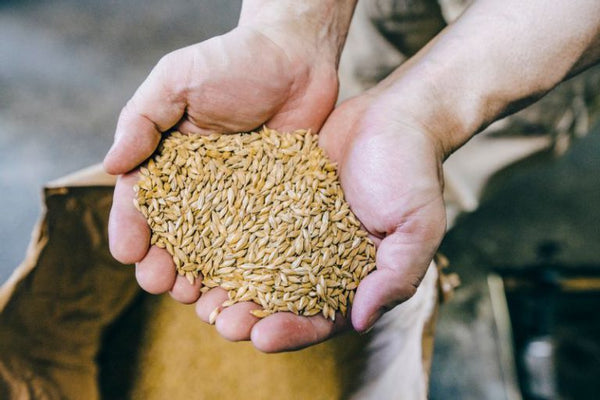Fruity and Spicy
Note: We assign every bottle we review to one of five Flavour Camps, based on the most dominant flavours found. The Flavour Camps are : (1) Fragrant and Floral, (2) Fruity and Spicy, (3) Malty and Dry, (4) Rich and Round and (5) Smokey and Peaty. To learn more about each Flavour Camp, please click here.

Since my earlier reviews of the Shizuoka Prologue K and Prologue W, well-meaning connoisseurs have expressed some concern to me about the future of Japanese whisky.
Regrettably, the Japanese whisky industry had underestimated its white-hot demand in the mid-2010s. Giants like Yamazaki and Nikka had to cull their ridiculously overvalued age-statement line-ups and focus on NAS bottlings while we wait for the aging stock to grow. Sometimes, in order to make some profit they even repackage them as questionable bottlings that shouldn’t have seen the light of day.

Many fear the same would happen to new Japanese start-ups like Shizuoka. Here’s a distillery with no track record, but its first NAS bottlings aren’t particularly cheap. And it already has a cult following- 700ml bottlings of the Prologue K are currently being traded “like a Tesla stock” on the secondary market, bid up by an army of distillery fans and speculators no less. Does Shizuoka deserve to command these prices?
These are sensible reservations. But we should also bear in mind that Shizuoka shouldn’t be cast under the same light as Yamazaki or Nikka. It is part of the pantheon of “craft” whisky-makers intended to appeal to a niche market.
I’m aware that even the term “craft” could raise eyebrows. Does it even mean anything besides an arbitrary $60 increase to the price?
The concept is quite real in Japan. “Jimoto no uisukī” (地元のウイスキー) or simply “Ji-whisky” is a concept dating back to at least the 1970s. Roughly translated, “Ji-whisky” means “local-origin whisky”. The concept refers to small family-run operations that distil small batch whiskies made from local Japanese ingredients and which are admired for their dedication to craft and quality. Original exemplars of Ji-whisky include Hanyu Distillery which was run by the predecessors of Ichiro Akuto (Chichibu’s founder), and Sunshine Whisky from Wakatsuru Saburomaru Distillery which was sold in cute saké bottles.

The main problem with the concept of “craft” whisky is that it is open to abuse as marketing baloney. The term has eluded legal definition, so bottlers can take advantage of the uninitiated. “Craft” could mean everything and nothing at the same time. Most amusing is the test suggested by Ian Buxton, respected author and former marketing director of Glenmorangie:
I’ll offer my humble definition. We generally think of craft distillers as small, independent operations, devoted to authenticity, use of traditional or local ingredients, traditional production methods and the prioritisation of quality over efficiency or profit.
This isn’t the most precise description, but a few distillers come to mind. There is Springbank Distillery who proudly sticks to the laborious practice of “floor malting” even though no one really knows whether this traditional practice affects flavour. There is also Dornoch Distillery who uses heritage barley that has a lower alcohol yield but supposedly better flavour. Across the Atlantic, there is Kentucky Peerless that swears by the tricky and labour-intensive sweet mash fermentation process, instead of the industry-standard sour mash process. In essence, this process allows Peerless to extract more flavour and character from the spirit, because there is no longer a need to remove unpleasant notes that are byproducts of the "sour mash" process.

Also key are the people behind the product. Craft distillers are sincere about the art of making whisky in a way that almost ignores efficiency and expense. This explains why we get scoff when we see “craft” printed on releases from big conglomerates like Diageo. Very large corporate groups with huge production capacities and pragmatic shareholders simply cannot tolerate expensive methods of producing whisky when cheaper and more efficient modern methods are available.
We might therefore begin to accept the smaller supply and steeper pricing. Craft distilleries like Shizuoka simply do not have the resources to operate on Suntory’s leviathan-sized production capacity. They aren’t built that way. Springbank Distillery is a useful parallel. Its representative has once explained:
That’s dangerous for a firm our size. We have to make a [larger] margin. We’ve got 37 people working here.”
These are the reasons why a craft whisky like Shizuoka draws so much curiosity and already has a fanbase despite its higher price point, its lack of age statement and lack of track record.
So then, how is Shizuoka Distillery “craft”?
First, the obvious example - its prized vintage ex-Karuizawa pot still and its wood-fired pot still (the only one still in use by a whisky distillery). Using these traditional stills means much more inefficiency and less control over the distillation process. Yet romanticism prevails over pragmatism here. There is a sentimentality for Karuizawa and the belief that a wood-fired still would create a distillate with a distinctive character.

Pot Still W (right) and Pot Still K (left).
Next, the washbacks. Instead of importing either steel or pinewood washbacks from Scotland, the inspired team spared no expense in tracking down the only living Japanese saké washback craftsman and had him build a Japanese cedar washback (traditionally meant for saké) but for whisky.

(Image Source: Nikkan Spa)
Finally, the raw ingredients. A core tenet of Ji-whisky is the use of local resources so that the whisky reflects its locality. In that spirit, Shizuoka sought to incorporate the use of local materials as far as possible. This includes the use of some component of Japanese barley to make the whisky - a big deal since barley is not Japan-native and the vast majority of Japanese distilleries import their barley. Shizuoka still has to rely on Scottish peated malt and German beer malt, so not 100% of Shizuoka’s barley is Japanese, but they really deserve points for trying their best.

(Image Source: Nikkan Spa)
We can see how romanticism trumps pragmatism at Shizuoka. The distillery is evidently a labour of love by the founder and not purely a profit-driven commercial venture. This fits the bill of a craft distillery.
The bottle with me today is Shizuoka’s third bottling - the Shizuoka Contact S.
You may recall from my earlier review that the Prologue K was made with distillate from the ex-Kariuzawa pot still, whereas the Prologue W was from the wood-fired pot still. The Contact S is a yin-yang combination of both distillates. It has been aged for 3 years in primarily first-fill bourbon barrels and quarter casks – although I am told that unlike the Prologues, there are some sherry casks here. This is bottled at 55.5% ABV with a total outrun of 5,000 bottles.
Tasting notes

Colour: Golden straw. Slightly thicker legs than the Prologues.
On the nose: Rich, luscious and brightly fruity. Much more forthcoming than the Prologue K and of similar profile as the Prologue W.
The initial whiff brings ample notes of honey and bright fruits - golden clarified apple juice by Martinelli's turning to ripe mangoes.

Sweetness endures but bright fruits gradually turn to lashings of cream, caramel and buttered toast.

The fruit and caramel is buoyed by a layer of Menthol-like vapours that suffuse through the nose. The nosing experience is very smooth and mellow even when the strength of the spirit can certainly be felt on the sides of your nostrils.

As things calm down and richer notes depart, the nose reveals mild Highland Scotch-like notes of orange cake and a slightly Campbeltown diesel note on the back.

In the mouth: Sweet and mineral to start, with a thick, waxy texture. Palate opens with honey and stewed apples before turning to rich tea biscuits and baked croissant.

A longer sip draws out a potent combination of caramel with gasoline, chalkiness, saline and thinly-slivered prosciutto – reminiscent of lighter Springbank styles. The character of the spirit is bold and hefty, but not by any stretch prickly. There is some heat but the well-balanced and rich notes make for really easy drinking.

A little bit of swirling and time turns the palate slightly more nutty and oaky. Sweet apples and caramel remain present as soft nougat and chocolate-coated marzipan take shape. A dark oakiness and mildly bitter cocoa develop on the back-palate before turning to dark Oolong tea-like note.

The finish is long, sweet and surprisingly elegant. As louder notes fade, colourful subtleties start to emerge. Trailing notes of barley sugar surface with an element of banana milkshake and a mild solvent note. There is also some crisp yuzu fruit coupled with a fizzy aftertaste of dry Riesling wine.

My Take
After trying both the Prologue K and Prologue W, one can see that this bottle demonstrates a very well-executed marriage of both distillates. We see the luscious fruits and minerality of the Prologue K. We also see quite a bit of the punchiness, heftiness and thick texture of the Prologue W.
But even the best marriages require a bit of compromise. In the previous review, I had deeply enjoyed the shy elegance and subtlety seen in the Prologue K. I can’t help but miss that narrative which was inevitably submerged under the more striking and heftier notes of the Contact S. That said, it pays to pay attention to the finish. This subtle elegance does re-emerge in the final act after the livelier folks have departed from the party.
On the whole, this is tasty, well-rounded, sufficiently complex and downright drinkable. It would carry wide appeal and it falls into that very narrow category of bottles that new drinkers would enjoy and whisky nerds would love talking about.
Whatever unconventional Ji-whisky thingamajig they are doing at Shizuoka, they’re headed in the right direction. Because if this represents the kind of whisky we can consistently expect from Shizuoka Distillery, whiskyland needs to follow closely and take notes.
Our Rating |
🌊⚖️🌟A tidal wave of robust flavours with very impressive balance and sufficient complexity to titillate the palate. |
I would have less trouble being impartial if I hadn’t tried the Prologue K before I tried this Contact S. Funnily enough, I feel cursed by knowledge: my preference is for the Prologue K’s subtlety over this bottle’s potency. Be that as it may, I'm not the only one whose opinions matter. This is an incredibly well-married dram with a balance that will appeal to a wider crowd.

@charsiucharlie







